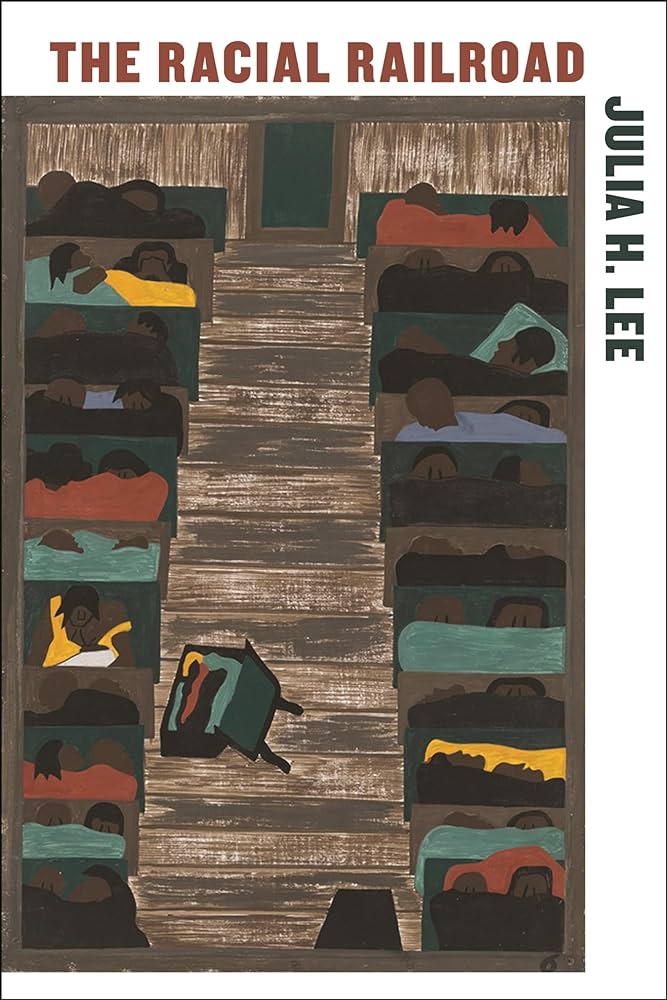Lee examines affinities between narratives and images of American exceptionalism and railroads, both of which narrowly orient perspective through the perception of movement. She analyzes the phantom ride, an early cinematic genre involving single tracking shots of landscapes and train tracks, filmed from the front of a train, without showing the train itself. The phantom ride, she writes, “contains multiple oppositions that are fundamental to mythologies of the nation, particular[ly] in relation to the West. It has an endpoint and is at the same time endless, and it follows a track that dictates a passenger’s path but that cannot be seen past the horizon.” Lee examines visual narratives of trains in railroad advertisements, in film history, and in reenactments that are more historical criticism than historical. She examines narratives of Chinese degeneracy and Chinese American memory, of the survival and critique of Jim Crow, and of border crossings and the exploitation of migrant labor, all taking place on trains.
As in the history of deportation trains, these narratives and images claim sovereign imperatives to control land and bodies. Where Blue analyzes moments of resistance—when labor radicals on deportation trains used the journey to organize their fellow passengers—Lee analyzes skillful uses of trains to subvert US claims of sovereignty. For example, Jemez Pueblo artist Jaque Fragua has painted “Stop Coal” on freight trains and “This Is Indian Land” on temporary construction walls in Los Angeles. Transposing graffiti from urban subways to regional freight systems, Fragua’s work asserts that this is all Indian country.
Scholarship like Blue’s and Lee’s books offers valuable insights on how racism and exclusionary borders take shape through physical infrastructure. These insights can help us understand the terrible costs of war, and the true wages of peace, from the standpoint of the global majority.
Consider how Du Bois examined World War I, known as the “Great War,” as it was taking place: “War is horrible! This the dark world knows to its awful cost. But has it just become horrible, in these last days, when under essentially equal conditions, equal armament, and equal waste of wealth white men are fighting white men, with surgeons and nurses hovering near?”6
How did Du Bois understand the role of infrastructure in the “Great War”? What did he want us to see, from the vantage of the Jim Crow car?
Railroads were a core part of the infrastructure of 19th-century liberal imperialism, amplifying the development of the era’s other key industries, including telegraph, steel, lumber, coal, and steamships. Each rapidly consolidated into monopoly form, carving up the planet while seeking new arenas for growth. Competition among these monopolies catalyzed the “Great War.” Du Bois connected the violently legal enforcement of racial segregation on trains to the voracious consumption of racialized labor and the unrelenting extraction of resources from the darker world, for the enrichment of coteries of investors based in the major cities of Europe and North America. Competition among these cohorts, he argued, carried the violence they visited on their colonies into Europe itself.

